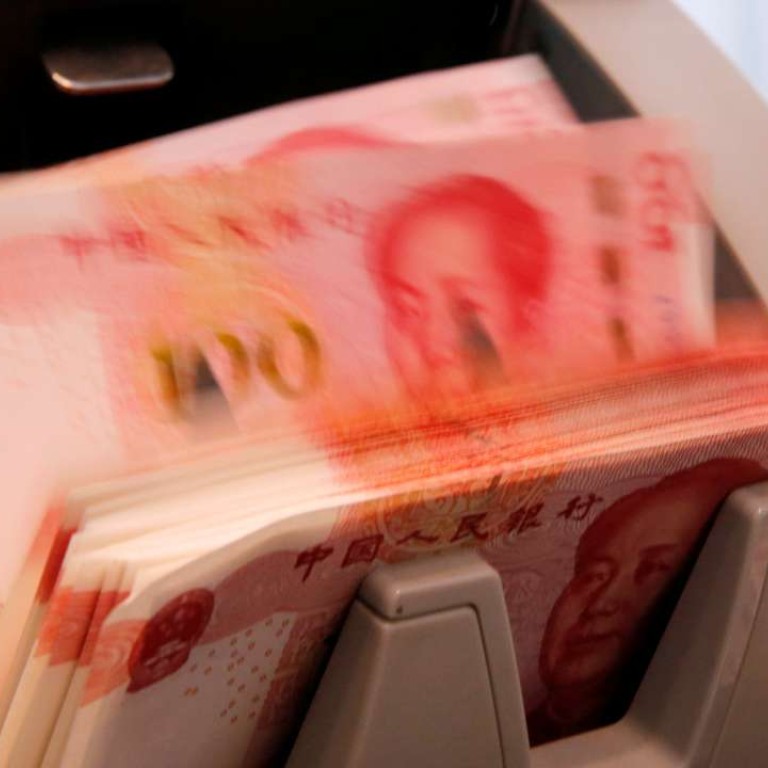
China’s yuan drops to a five-year low ahead of US Fed rate meeting
Currency being guided lower by central bank to mitigate risks of a rate rise and amid uncertainty over Britain’s decision on EU membership
China’s yuan currency dropped to its lowest in five years against the US dollar on Wednesday morning, with the central bank setting the reference price down ahead of a decision by the US Federal Reserve on interest rates.
Onshore yuan traded at 6.6043 on Wednesday morning, the lowest since January 14, 2011 when it touched 6.6367. The currency later bounced back to 6.5945 by 11.30am. The onshore yuan has dropped three days in a row, losing a total of 0.7 per cent this week.
The People’s Bank of China set the yuan reference point at 6.6001, the weakest in five years and 0.31 per cent or 210 basis points lower than Tuesday’s setting.
“The PBOC is guiding this path of gradual depreciation with expectations that the US Federal Reserve will start on the road of interest normalisation sooner than later,” said Stephen Innes, senior trader at OANDA Asia Pacific.
“Traders will be closely monitoring the close at weeks end, and if the market stays north of US dollar against the offshore yuan at 6.60 it will be hugely important for a technical perspective and could instigate a push higher similar to the last major breakout before the end of 2015.”
Innes said there would be “snowball effect in play” as a higher US dollar interest rates, weaker yuan fix and accelerating mainland capital outflows may lead the yuan to go further down to 6.75.
A rise in US rates could cause money to flow out of China in search of higher returns in the US. Higher US rates could also hurt some Chinese companies with heavy US-dollar denominated borrowings.
China has not yet allowed the yuan to freely trade internationally, while onshore yuan traders are allowed to trade up to 2 per cent either side of the reference point for the day. The PBOC daily fixing yuan price is seen as a guidance for the currency, particularly the onshore market.
Offshore yuan, which is traded mainly in Hong Kong by international players, fell to as low as 6.6152 early on Wednesday, the lowest since the 6.6185 on February 4 but still above the low for the year of 6.7511 marked on January 7. It later bounced back to 6.6052 at 11.30am.
While the chance of a US rate rise this month is receding, Innes said the US dollar may accelerate higher if the Fed keeps the prospect of a July rate rise on the table.
He said that a decision by global share index compiler MSCI not to include China’s A-shares in its benchmark emerging market indices was not a significant factor in the currency market.
“On the currency front, I expect the USD/CNH reaction to being neutral, despite an initial spike higher in early morning trading. The markets are illiquid and we should expect the offshore yuan to continue sliding off broader US dollar moves and shifting global risk sentiment,” he said.
The pound continued to be weak on Wednesday morning, at 1.4089 per US dollar, the lowest since March 22. Many UK polls shows voters who prefer to leave the European Union are more than those who would opt for staying in. A referendum on the issue is to be held on June 23.
Yen and gold remained as safe havens, with the yen at a three-year high against the euro and a six-week high against the US dollar of 106.07. Gold rose for a fifth day, with New York futures ending at US$1,288.1 per ounce.

